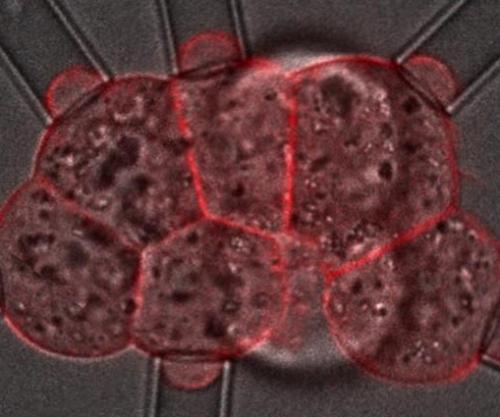Study: Embryo Development Features “Dancing Cells”
HEIDELBERG, Germany, June 16 (UPI) — Researchers have found the mechanism that brings embryonic cells together in a process called compaction.
Compaction is a transformative stage in the life of a young embryo — a stage when a developing embryo’s eight cells go from a loose association to a tightly bound single entity.
Researchers at the European Molecular Biology Laboratory wanted to know whether a mechanism called contraction or one known as adhesion served as the main driver of compaction.
Using a new method, they were able to measure tension levels throughout the process of compaction. In doing so, they found that contraction (not adhesion) to be the most vital mechanism.
Contraction is the twitching of a protein on the surface of each cell that slowly pulls each cell inward. Researchers found that while adhesion seals the deal, fusing cell surfaces together, contraction was more essential to achieving the right amount of tension.
“By measuring the tensions of the cells when each cellular process was blocked, we were able to prove it was a contraction that pulls the cells together to compact the embryo, rather than adhesion acting as a glue to ‘stick’ them together,” lead study author Jean-Leon Maitre said in a press release. “Adhesion is obviously important, but it appears to work as an anchor, rather than an engine of the compaction process.”
Researchers also noticed another unique phenomenon while observing the embryonic cells contract toward each other. During contraction, the cells begin to “dance.” The waves of contractions cause the surface of each cell to bend in corresponding fashion.
“We’ve no idea at the moment if this ‘dance’ is important,” explained lead researcher Takashi Hiiragi. “All we know is that it happens at the same time as compaction and is controlled by the same process.”
The new research was published in the journal Nature Cell Biology.







